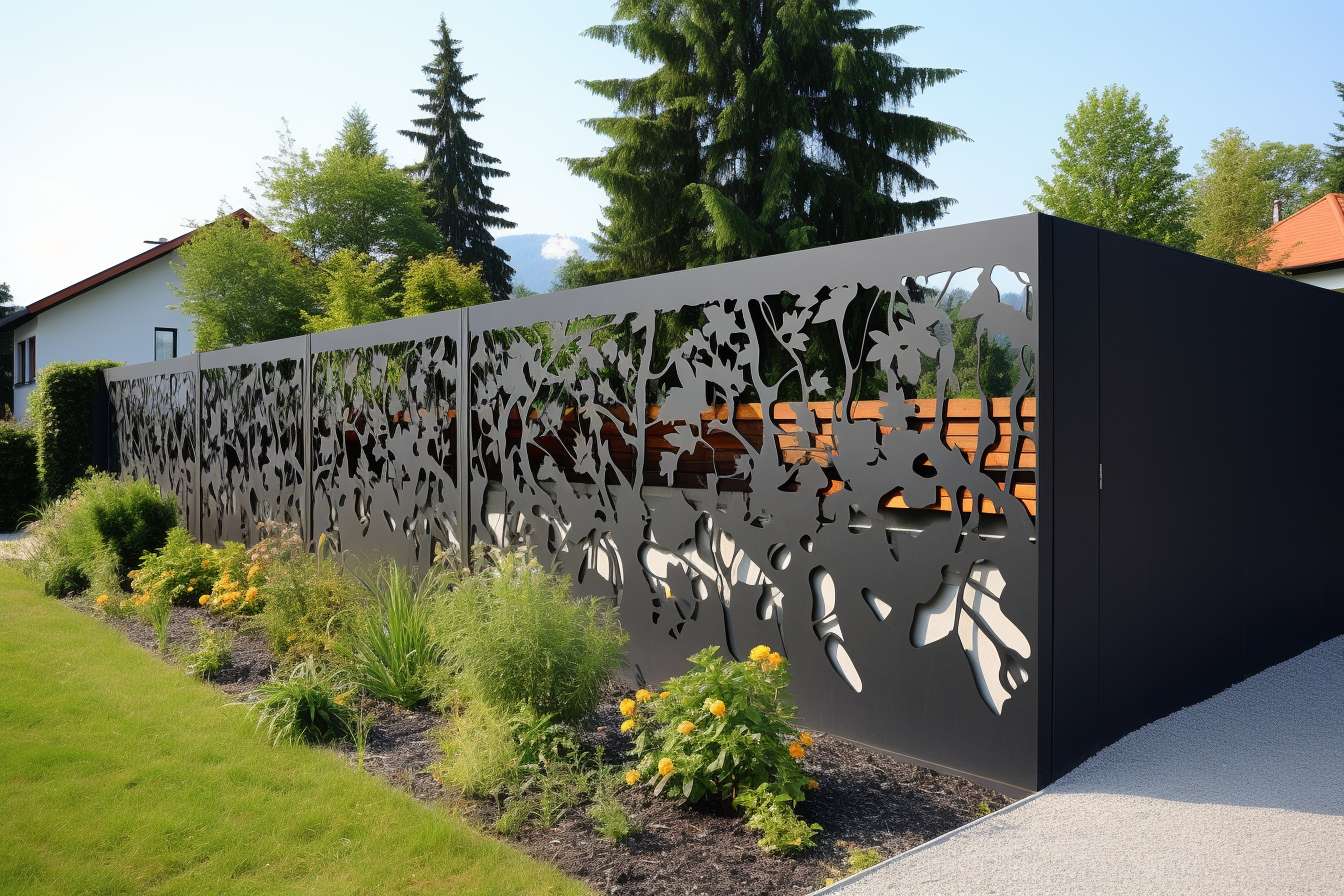Choosing the Right Garden Fence in 2025: Design, Durability & Smart Options
Selecting the perfect garden fence involves balancing aesthetic appeal, practical functionality, and technological innovation. As we move into 2025, homeowners face more choices than ever—from traditional wooden pickets to modern composite materials and integrated smart security features. This guide explores the latest trends, essential considerations, and maintenance strategies to help you make an informed decision for your outdoor space.

Garden fences serve multiple purposes—they define boundaries, enhance privacy, provide security, and contribute significantly to your property’s curb appeal. With advancing technology and evolving design trends, the fence options available in 2025 offer unprecedented customization and functionality. Whether you’re replacing an aging barrier or installing a new perimeter for your garden, understanding the full spectrum of materials, styles, and smart features will ensure your investment meets both immediate needs and future expectations.
Most Popular Types of Garden Fences in 2025
The fence market has evolved dramatically in recent years, with several styles emerging as clear favorites among homeowners. Traditional wooden fences remain popular for their natural appearance and versatility, available in picket, panel, and post-and-rail configurations. Vinyl fencing continues gaining market share due to its minimal maintenance requirements and impressive longevity, often carrying warranties of 20-30 years.
Metal options have seen significant innovation, with aluminum offering rust-resistance and decorative appeal, while steel provides maximum security with modern powder-coating techniques preventing corrosion. Composite fencing—made from recycled wood fibers and polymers—represents the fastest-growing segment, combining wood’s aesthetic appeal with plastic’s durability. For eco-conscious homeowners, living fences using carefully selected shrubs and trees provide natural screening that improves with age.
Best Options for Privacy in Garden Enclosures
When privacy is the primary concern, certain fence styles consistently outperform others. Solid panel fencing in wood or composite materials creates an effective visual barrier, typically standing 6-8 feet tall with no gaps between boards. Vinyl privacy fences offer similar screening capabilities with added weather resistance, though at a higher initial cost.
Innovative options gaining popularity include adjustable louvered fences that allow airflow while maintaining privacy, and double-sided lattice designs that incorporate climbing plants for additional screening. For those seeking both visibility and privacy, semi-private fences with alternating boards or decorative cutouts provide a balanced solution. Many homeowners are now combining fence types with strategic landscaping—creating layered privacy zones that enhance both security and aesthetic appeal.
Key Factors to Consider Before Buying a Garden Fence
Before making a final decision, several critical factors deserve careful consideration. Local zoning regulations and homeowner association rules may restrict height, materials, or placement—always check these requirements first. Property boundary verification is essential to avoid costly disputes with neighbors. Your specific needs—whether security, pet containment, or purely decorative—should guide material selection.
Climate considerations significantly impact durability; coastal areas require salt-resistant materials, while regions with extreme temperature fluctuations demand fencing that won’t crack or warp. Soil conditions affect post installation methods, potentially requiring concrete footings in unstable ground. Budget planning should account for both initial installation and long-term maintenance costs, as premium materials often prove more economical over time. Finally, consider your property’s architectural style—the fence should complement rather than clash with your home’s design elements.
Fence Maintenance Tips for Long Life
Proper maintenance dramatically extends fence lifespan regardless of material choice. For wooden fences, annual inspection for rot, insect damage, and loose boards prevents minor issues from becoming major repairs. Applying fresh sealant every 2-3 years protects against moisture damage and UV deterioration. Vinyl and composite fences benefit from seasonal cleaning with mild soap solutions to remove algae, mildew, and environmental pollutants.
Metal fencing requires checking for rust spots and addressing them promptly with appropriate treatment. All fence types need vegetation management—keeping plants trimmed away from fence surfaces prevents moisture retention and physical damage. For electronic or smart fence components, regular testing of sensors, cameras, and access mechanisms ensures continued functionality. Establishing a maintenance calendar with seasonal tasks helps preserve your investment and avoid the significant expense of premature replacement.
Creative & Modern Fence Ideas for 2025
The fence industry has embraced innovation, offering exciting new options for design-conscious homeowners. Horizontal board arrangements have supplanted traditional vertical patterns in contemporary landscapes, creating a sleek, modern aesthetic. Mixed-material fences combining wood with metal accents or stone pillars provide unique visual interest. Integrated lighting systems—from solar-powered post caps to LED strip lighting—enhance both security and ambiance.
Smart fencing technology continues advancing, with options now including integrated security cameras, motion sensors, and smartphone-controlled access points. Environmentally conscious designs incorporate recycled materials and sustainable production methods, while some manufacturers offer carbon-neutral certification. Decorative elements like custom metalwork, etched glass panels, and laser-cut designs allow for personalization that transforms functional barriers into artistic statements. For small spaces, modular systems provide flexibility and easy reconfiguration as garden needs evolve.
Garden Fence Cost Comparisons and Options
When planning your garden fence project, understanding the cost implications of different materials and features helps make informed decisions that balance budget with desired outcomes.
| Fence Type | Average Cost (per linear foot) | Typical Lifespan | Maintenance Level |
|---|---|---|---|
| Pressure-Treated Wood | $15-$25 | 15-20 years | Moderate to High |
| Cedar/Redwood | $25-$40 | 20-30 years | Moderate |
| Vinyl | $20-$35 | 30+ years | Very Low |
| Aluminum | $25-$40 | 30+ years | Low |
| Steel | $30-$55 | 20-40 years | Low to Moderate |
| Composite | $30-$45 | 25-30 years | Very Low |
| Chain Link | $10-$20 | 15-20 years | Low |
| Wrought Iron | $30-$55 | 50+ years | Moderate |
Prices, rates, or cost estimates mentioned in this article are based on the latest available information but may change over time. Independent research is advised before making financial decisions.
Installation costs typically add $10-$30 per linear foot depending on terrain, accessibility, and local labor rates. Additional features like gates ($150-$600 each), decorative post caps ($10-$50 each), and smart technology integration ($500-$2,000 for basic systems) further affect total project cost. Most homeowners report spending between $3,000 and $8,000 for complete fence installation around an average-sized garden, though complex designs or premium materials can push costs significantly higher.
The garden fence you select ultimately represents a balance between aesthetic preferences, functional requirements, and budget constraints. By thoroughly researching materials, understanding maintenance commitments, and considering long-term value, you’ll make a choice that enhances your property for years to come. Whether prioritizing privacy, security, or visual appeal, today’s diverse fencing options ensure a solution exists for every garden setting and homeowner need.




